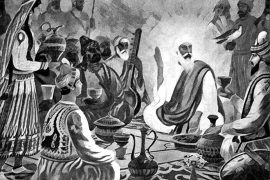As the author of the recently published novel A Nest for Lalita, I’ve often been asked what motivated me to write a novel set in India about a social activist, Meena Kaul, and her quest to shelter women who have survived domestic violence? And how did I come to write about Meena’s struggle with an ultra-right-wing Hindu party, which is trying to turn the clock back on women’s rights?
The India part was easy: I fell in love with the country the moment I read the Yoga Sutras in college. I went on to do a Ph.D. in Sanskrit and Indian studies at Harvard University and lived in Varanasi, Pune, and New Delhi for a total of more than five years. But the reason I began a novel about a woman activist is more complicated. The short answer is that I am atoning for the sin of writing a ten-pound Ph.D. dissertation on the subject of Sanskrit love poetry.
Let me explain.
Sanskrit poetry, mostly written between the 5th and 12th centuries, has captured many a heart, both within and outside of India. Here’s a short poem by Rājashekhara, a 9th century poet and critic, to illustrate the genre.
The cut of lover’s nail upon her breast
Shows drops of blood as red as lac;
As if of Kāma’s [Cupid’s] fire, grown strong within,
The sparks had burst forth through her heart. – [translation by Daniel H.H. Ingalls]-30-
Copyright©Madras Courier, All Rights Reserved. You may share using our article tools. Please don't cut articles from madrascourier.com and redistribute by email, post to the web, mobile phone or social media.Please send in your feed back and comments to [email protected]











